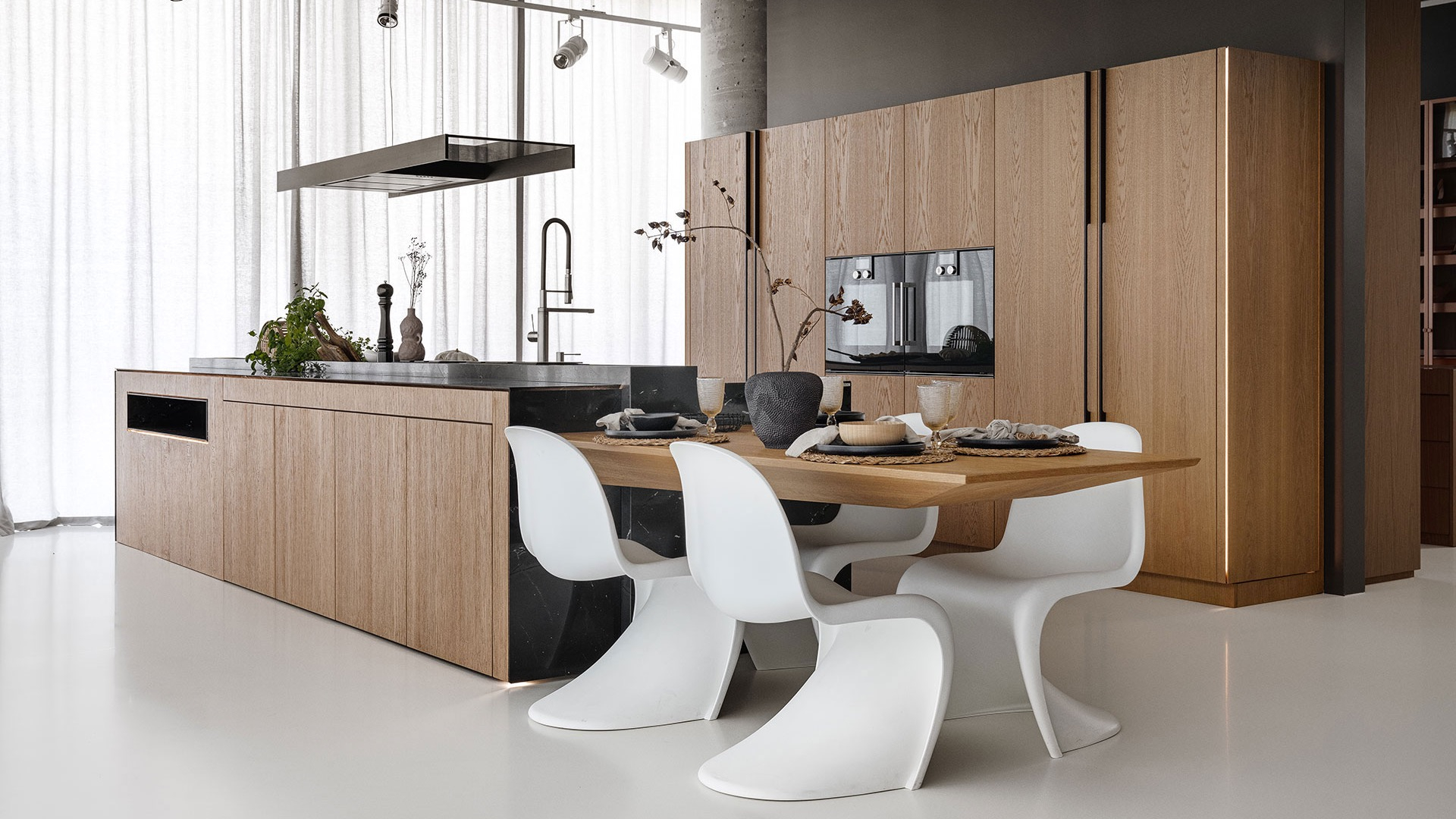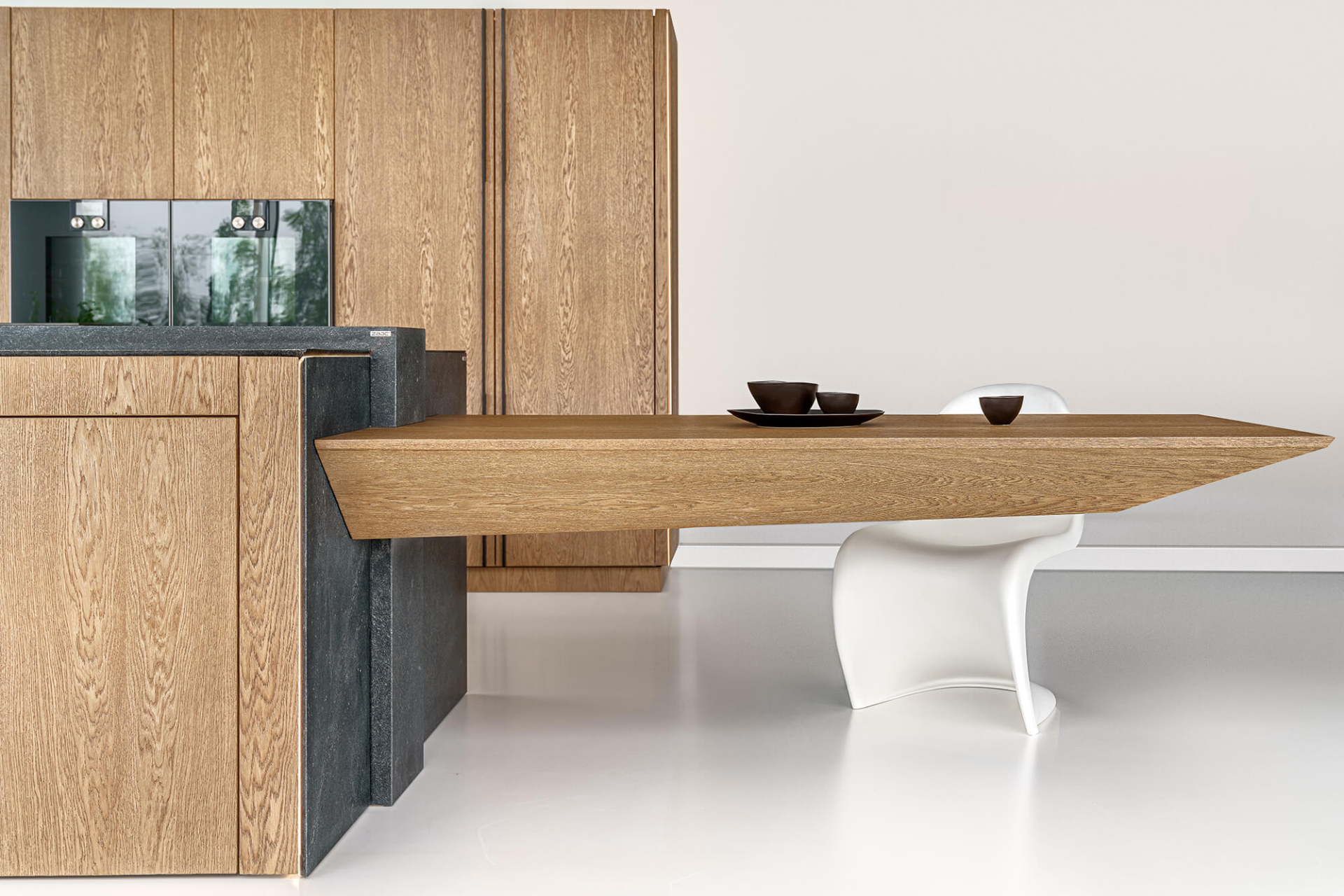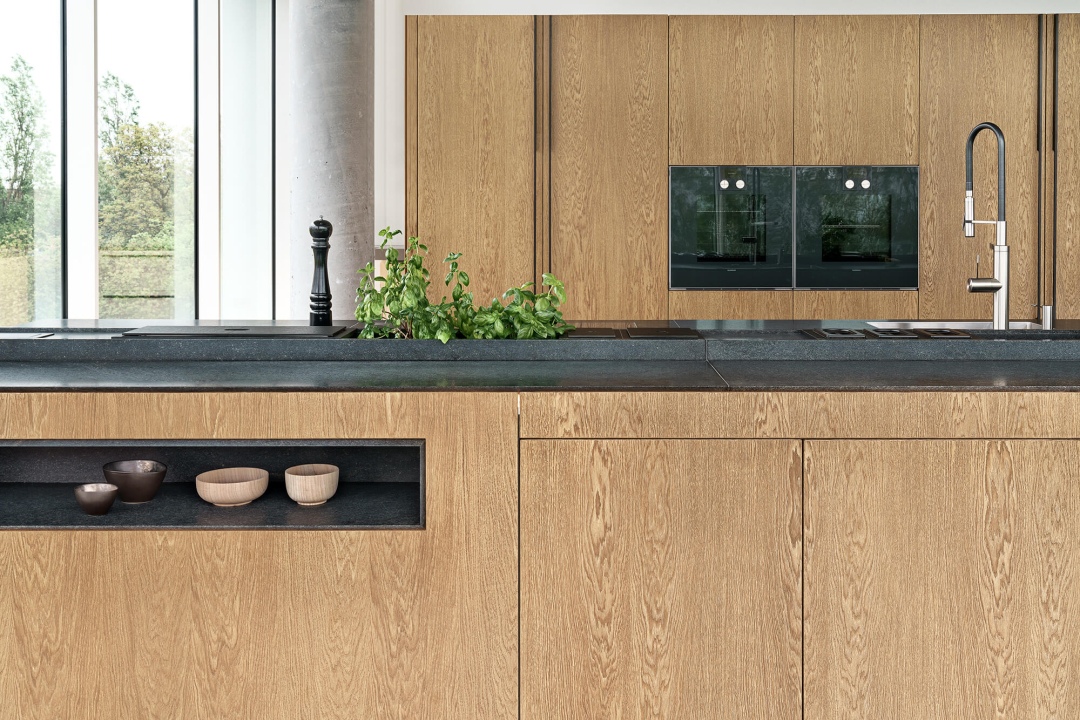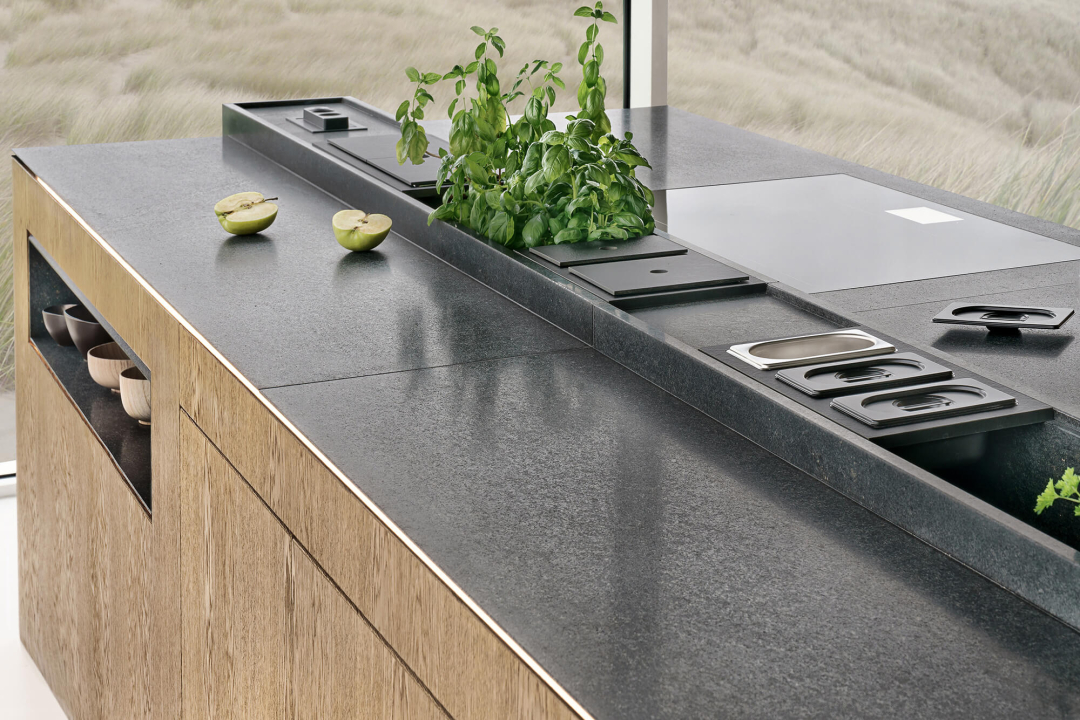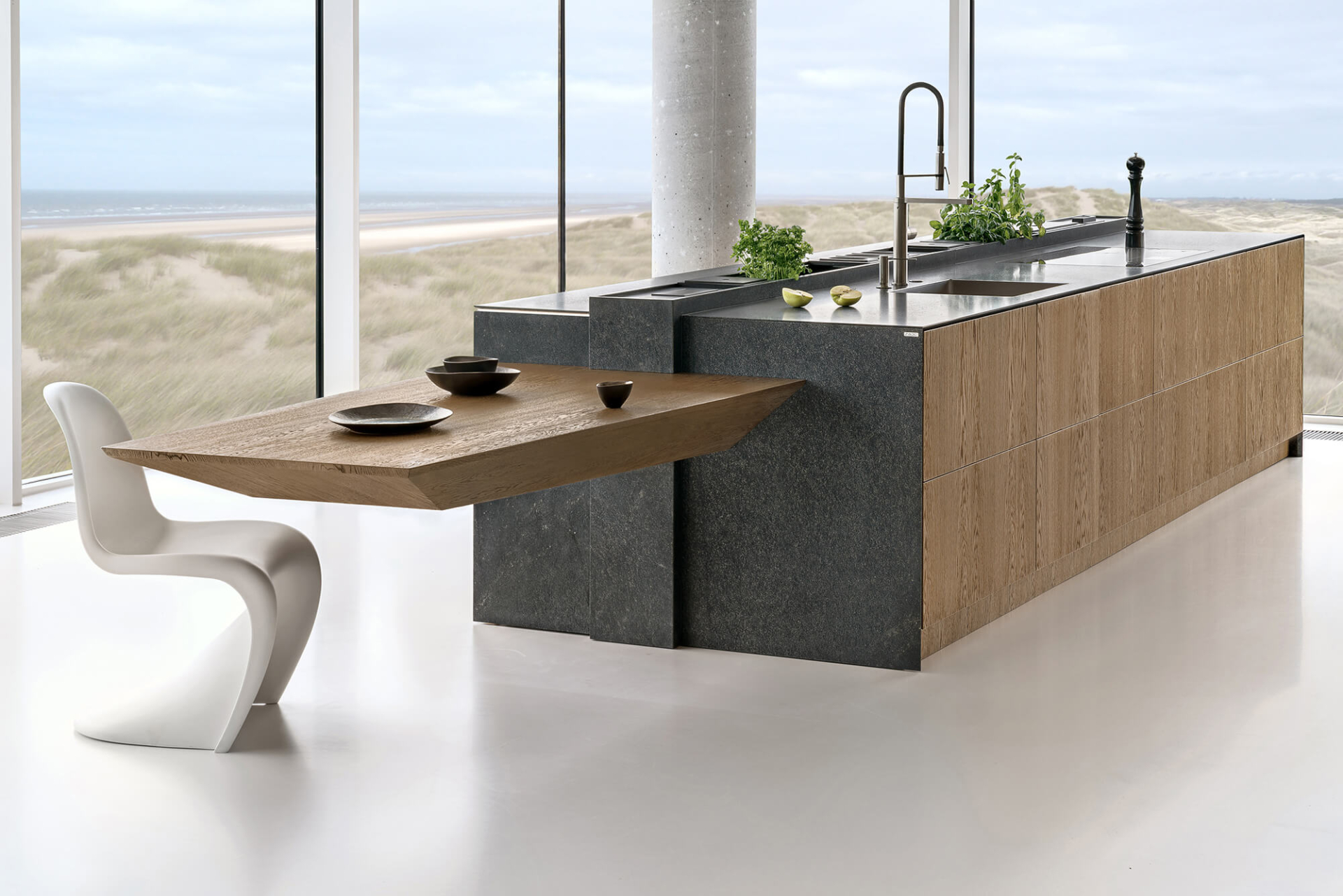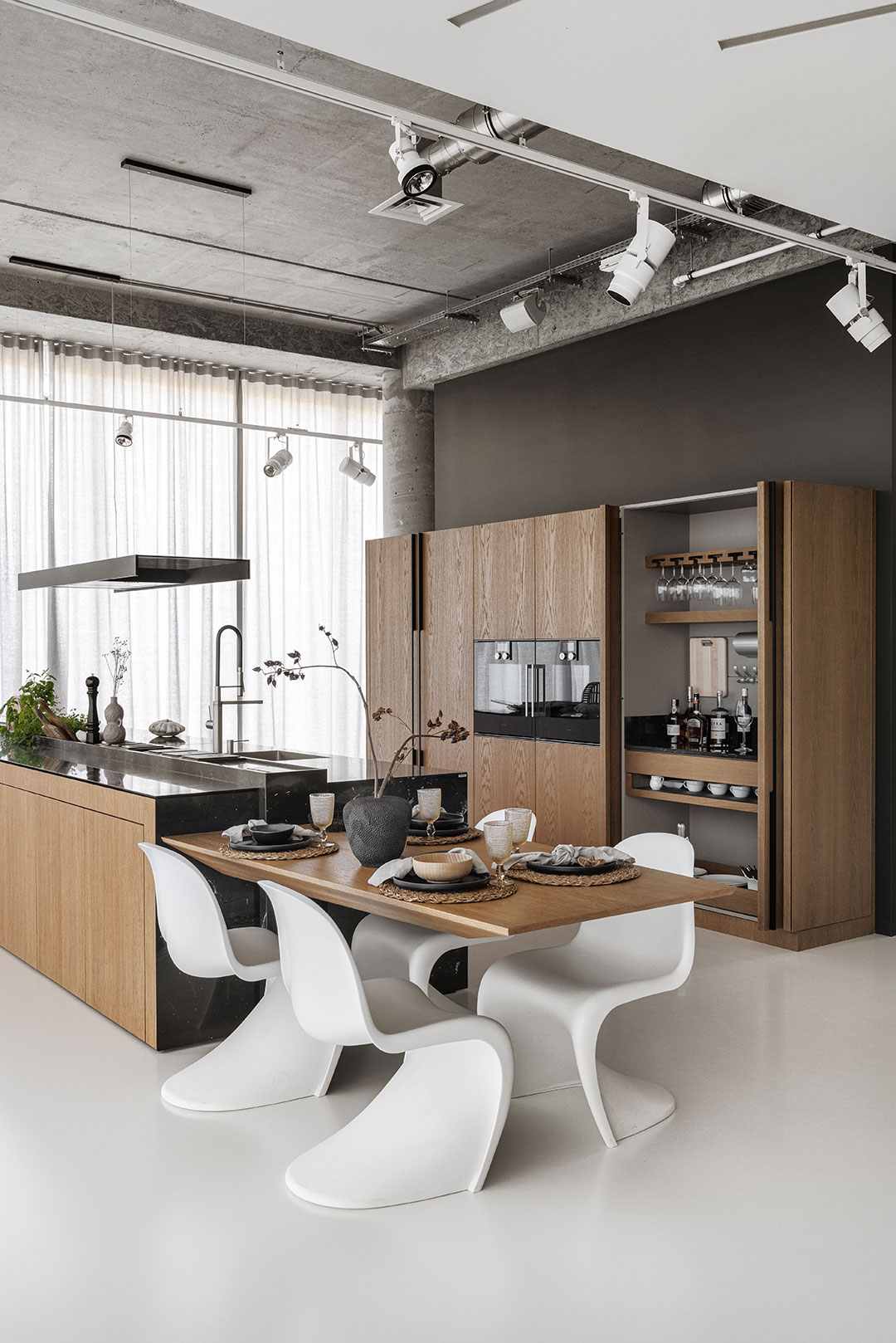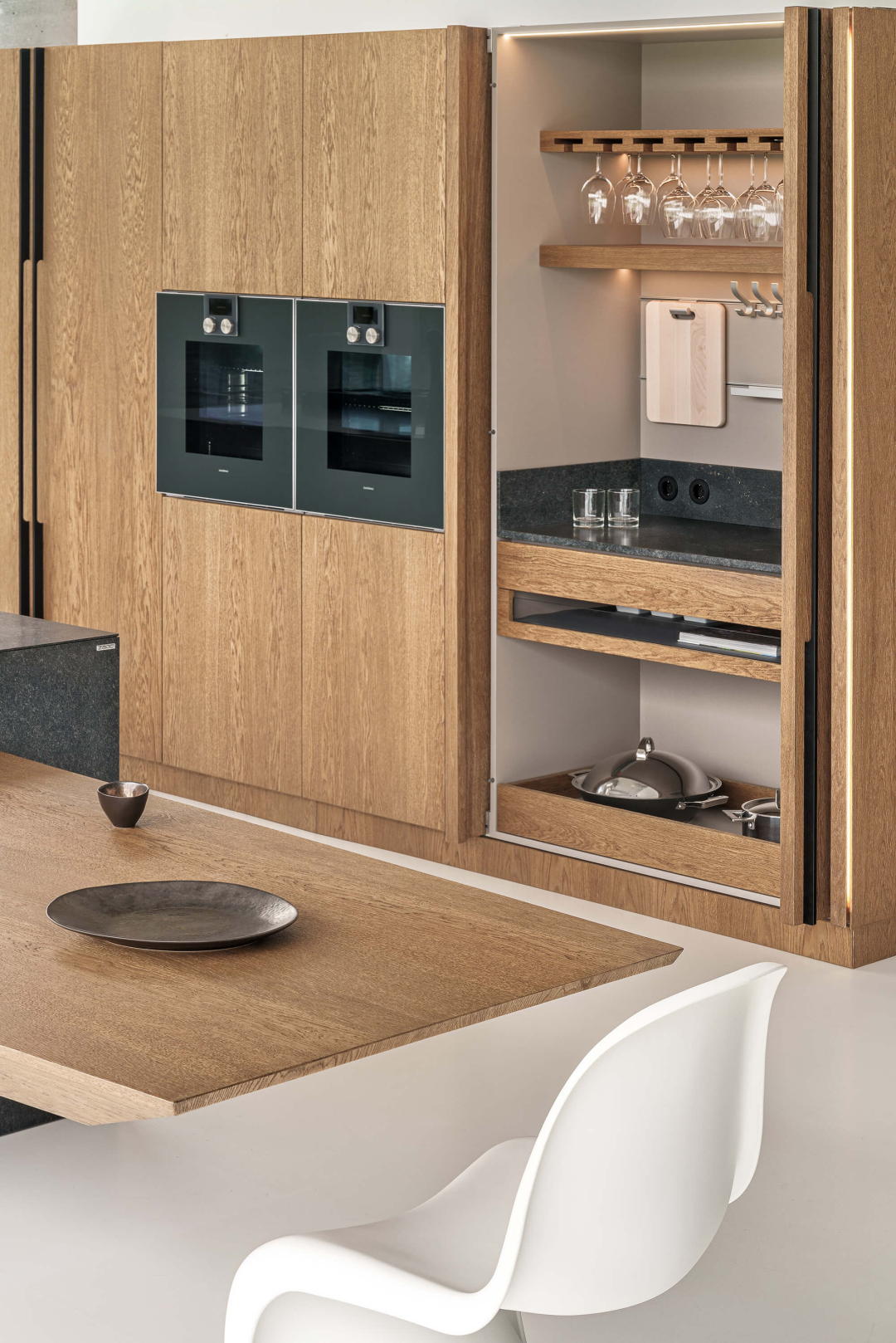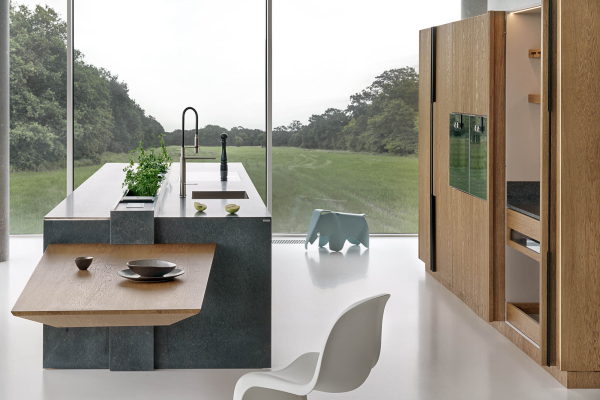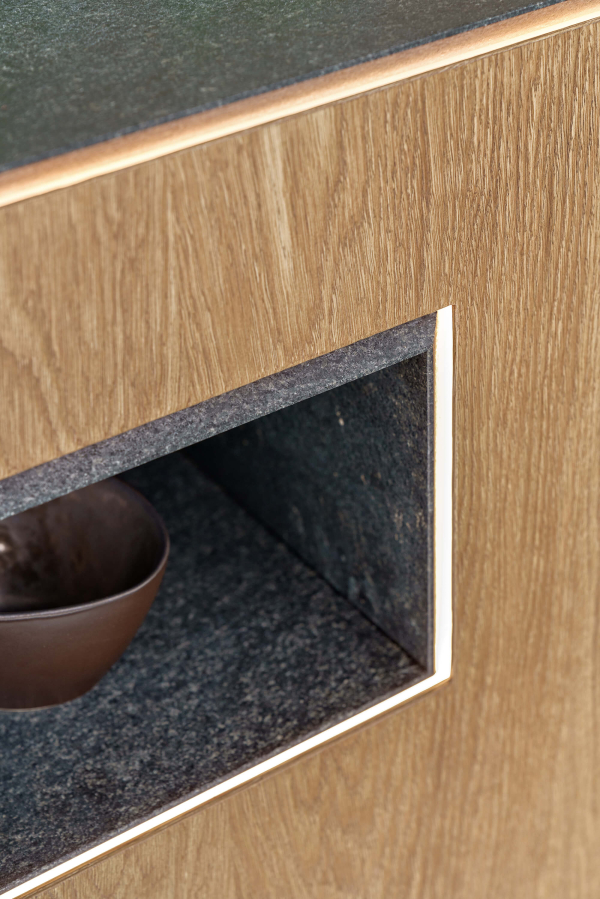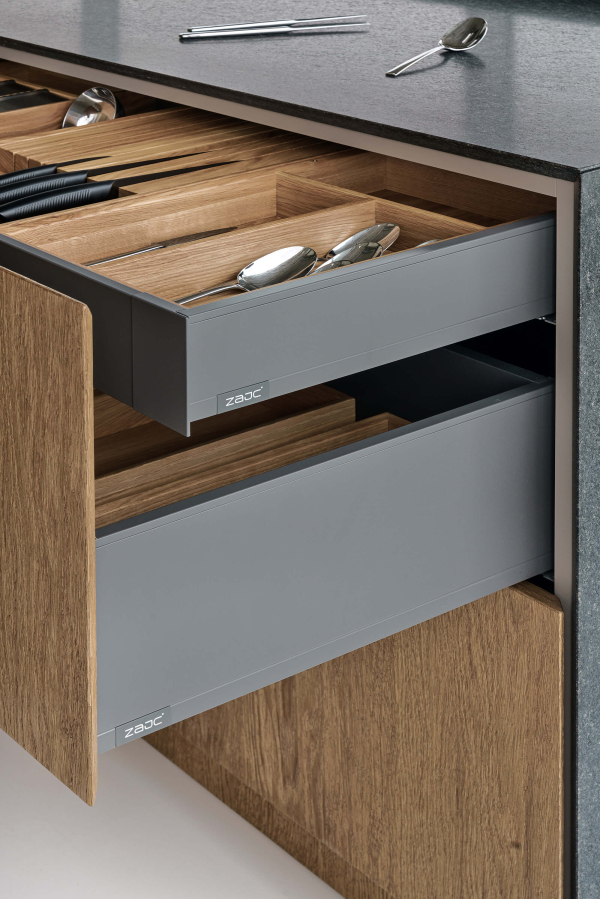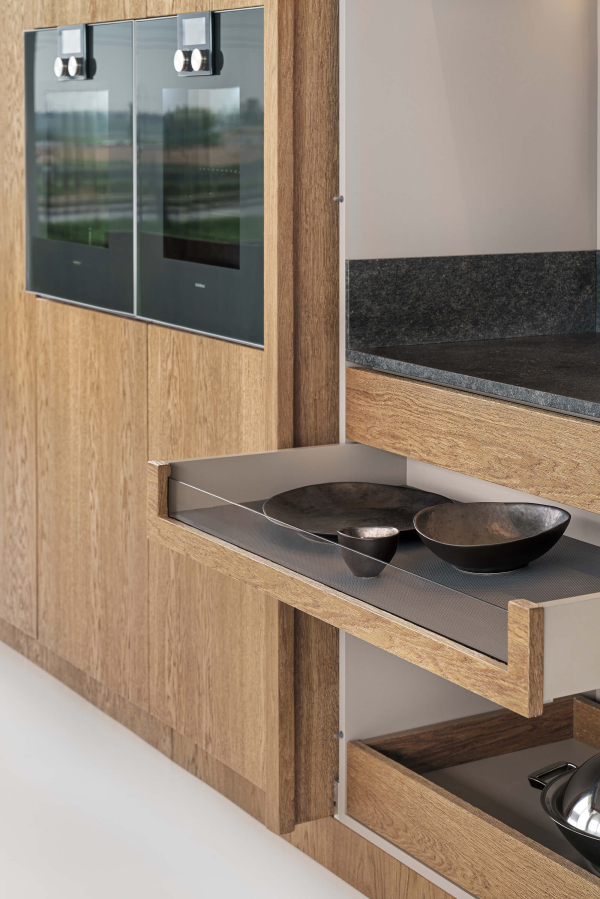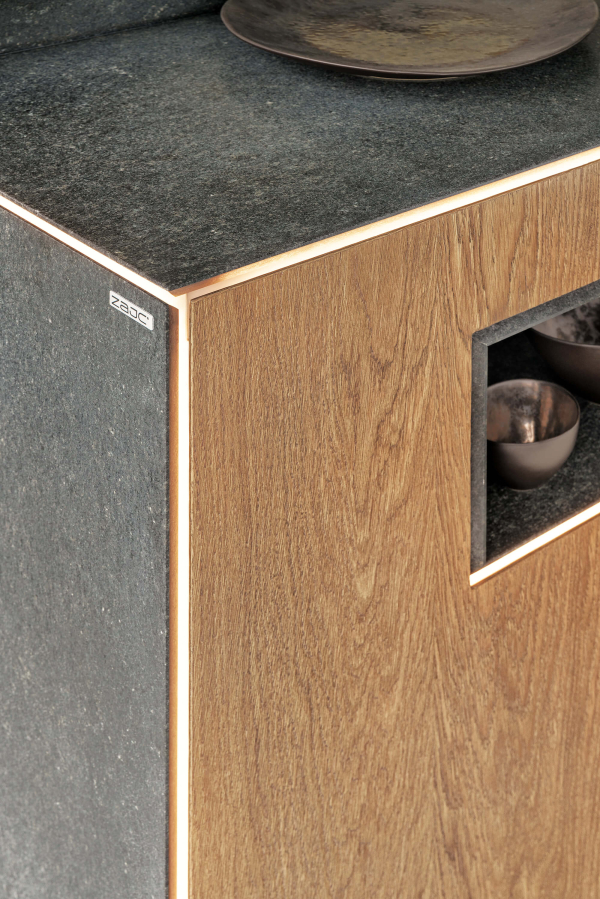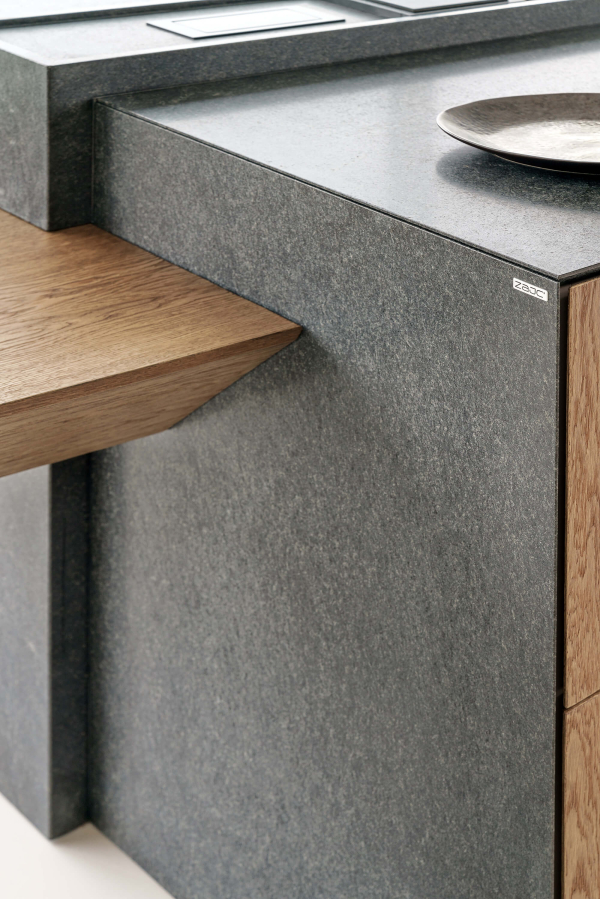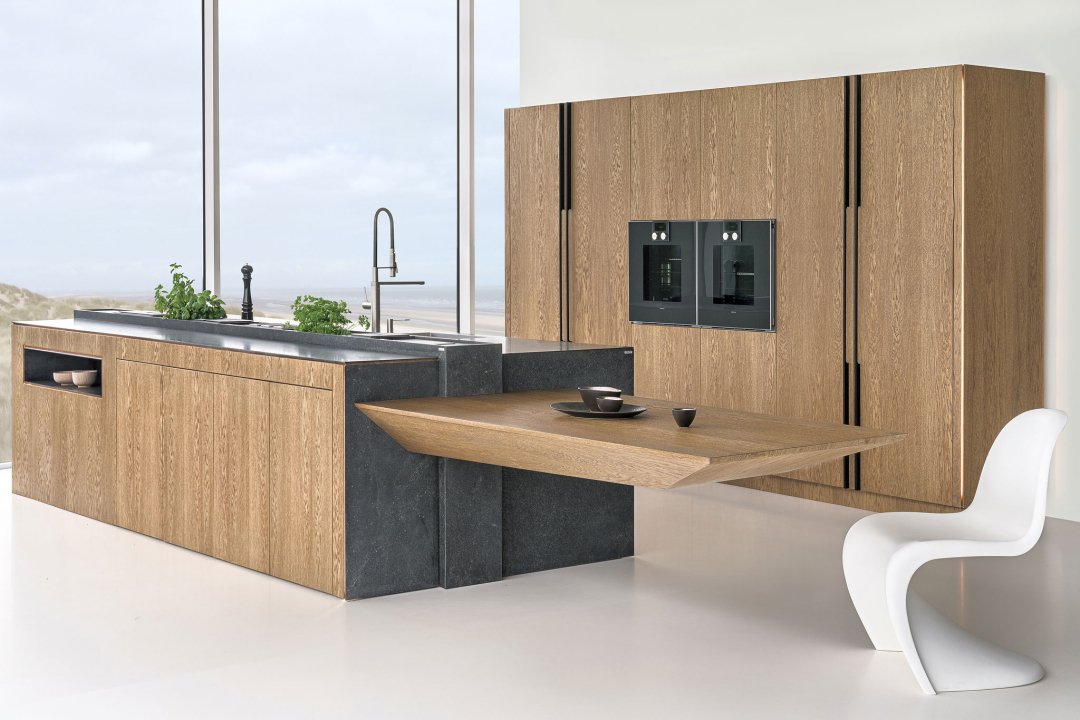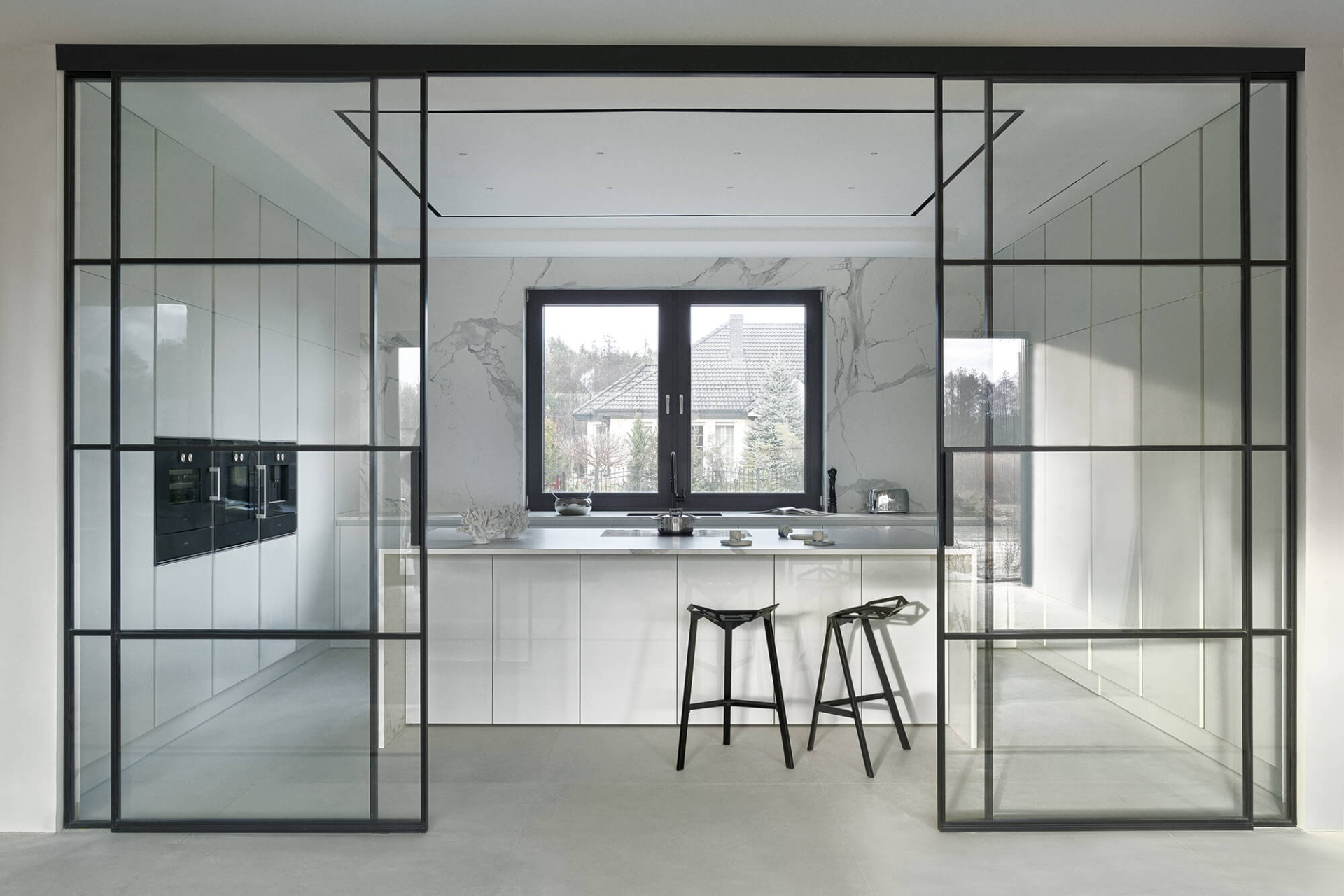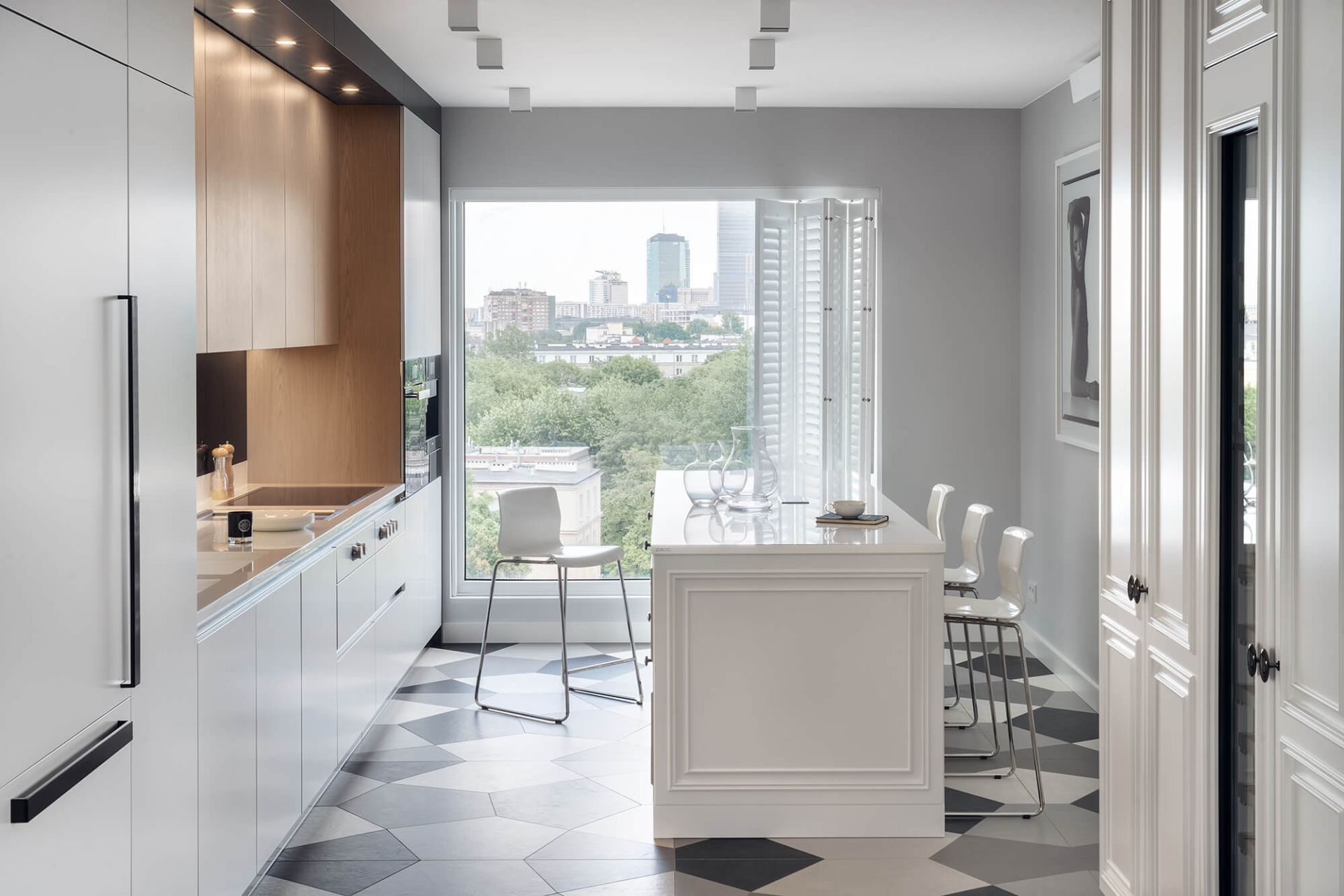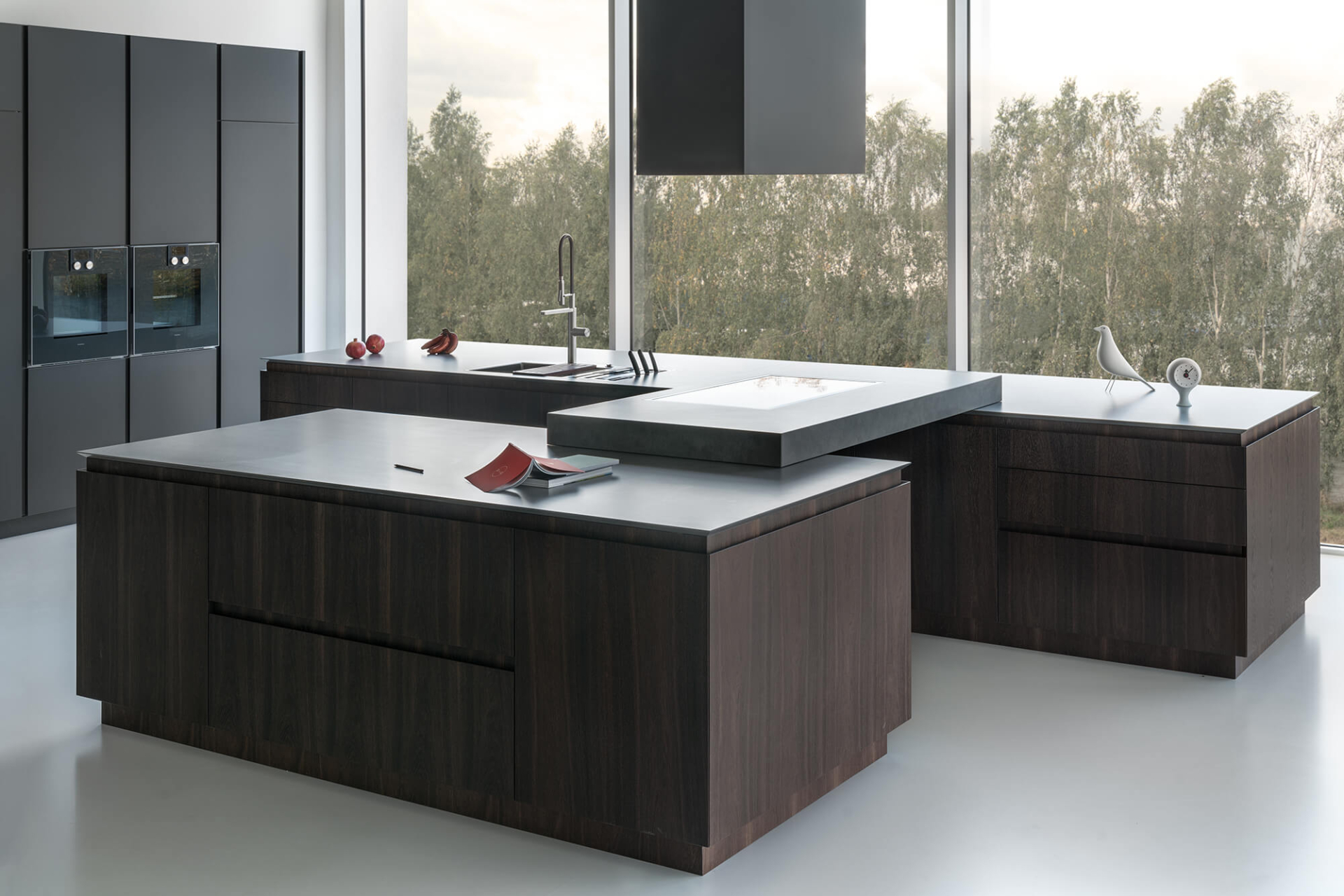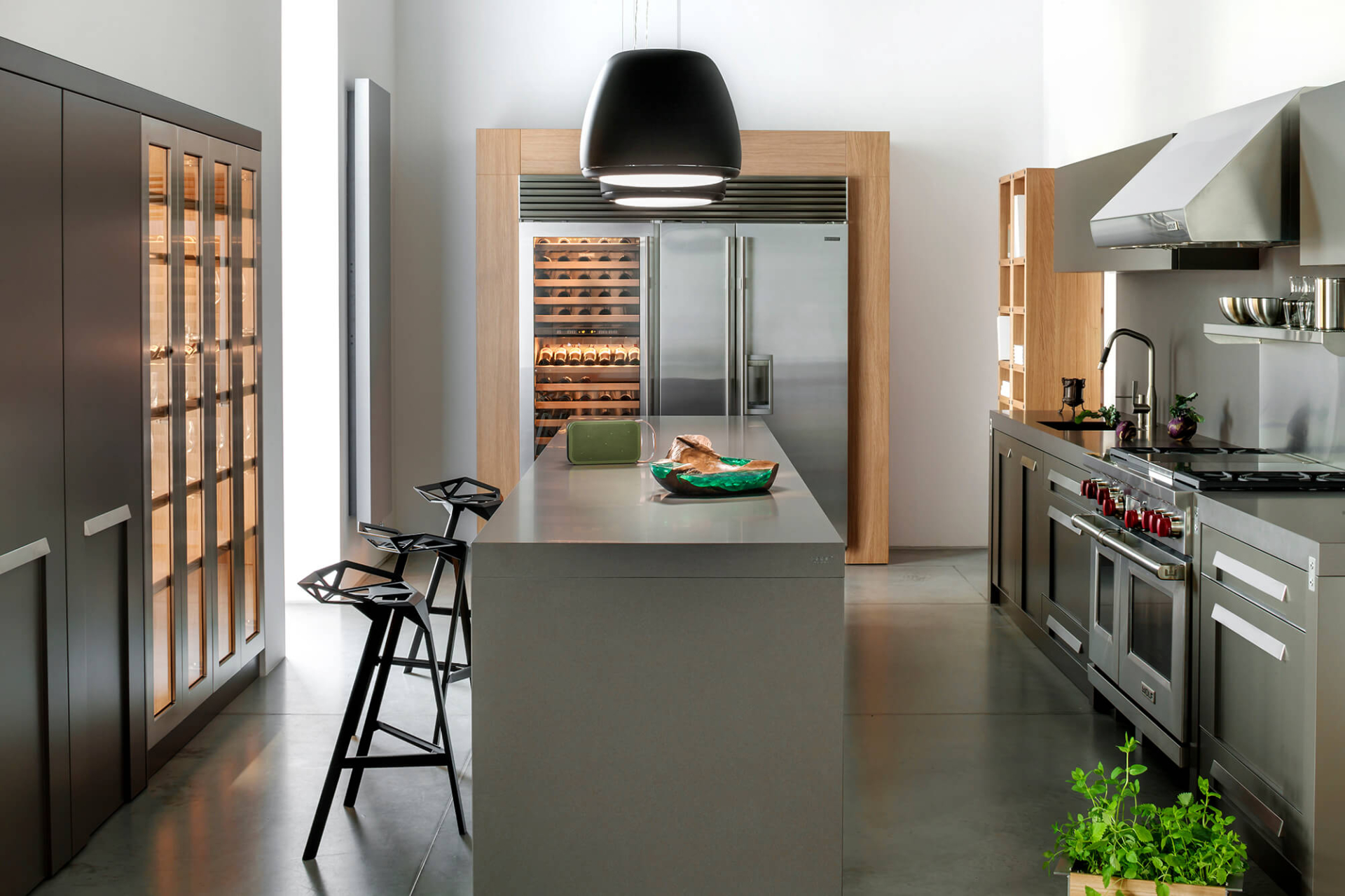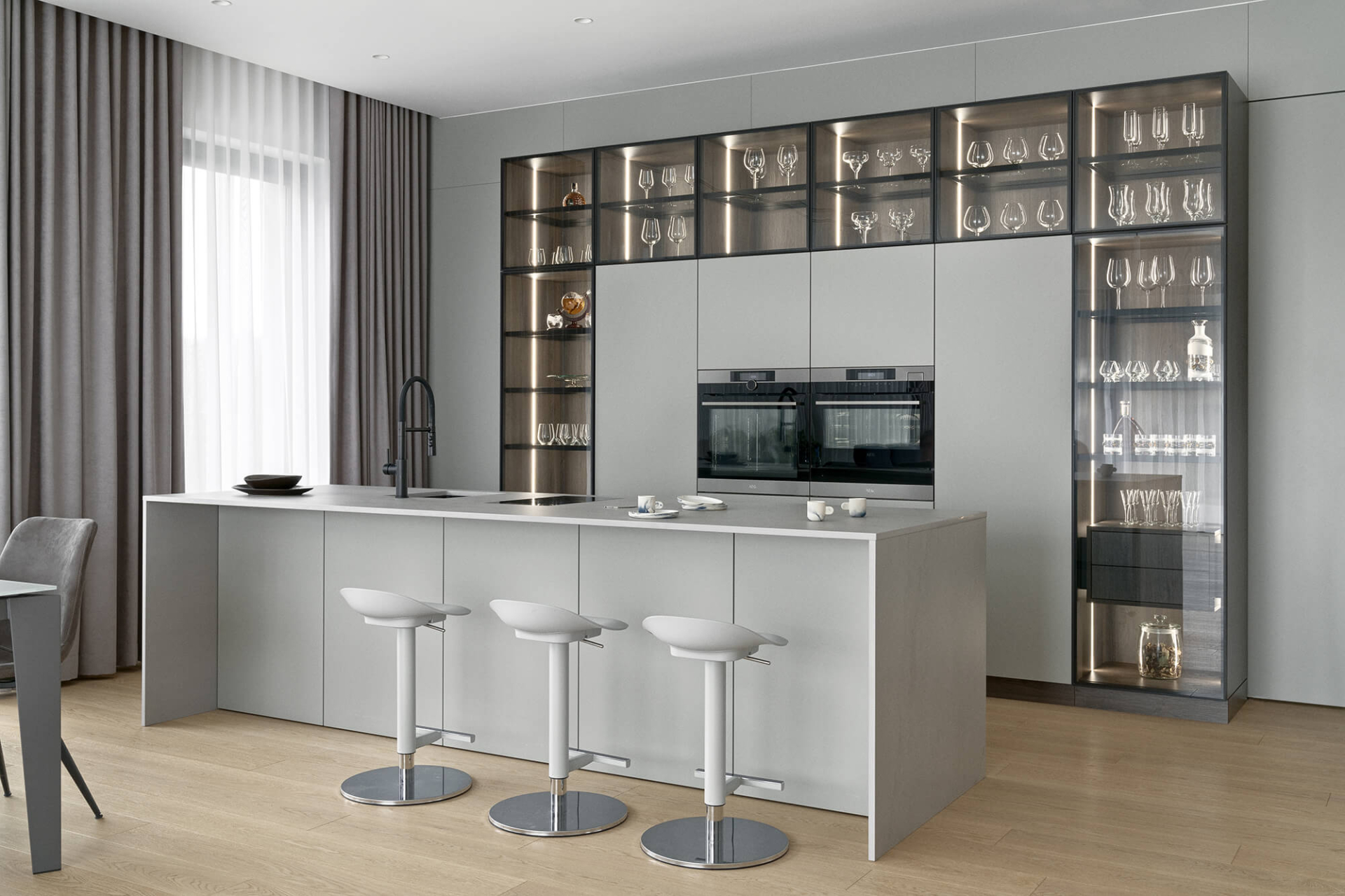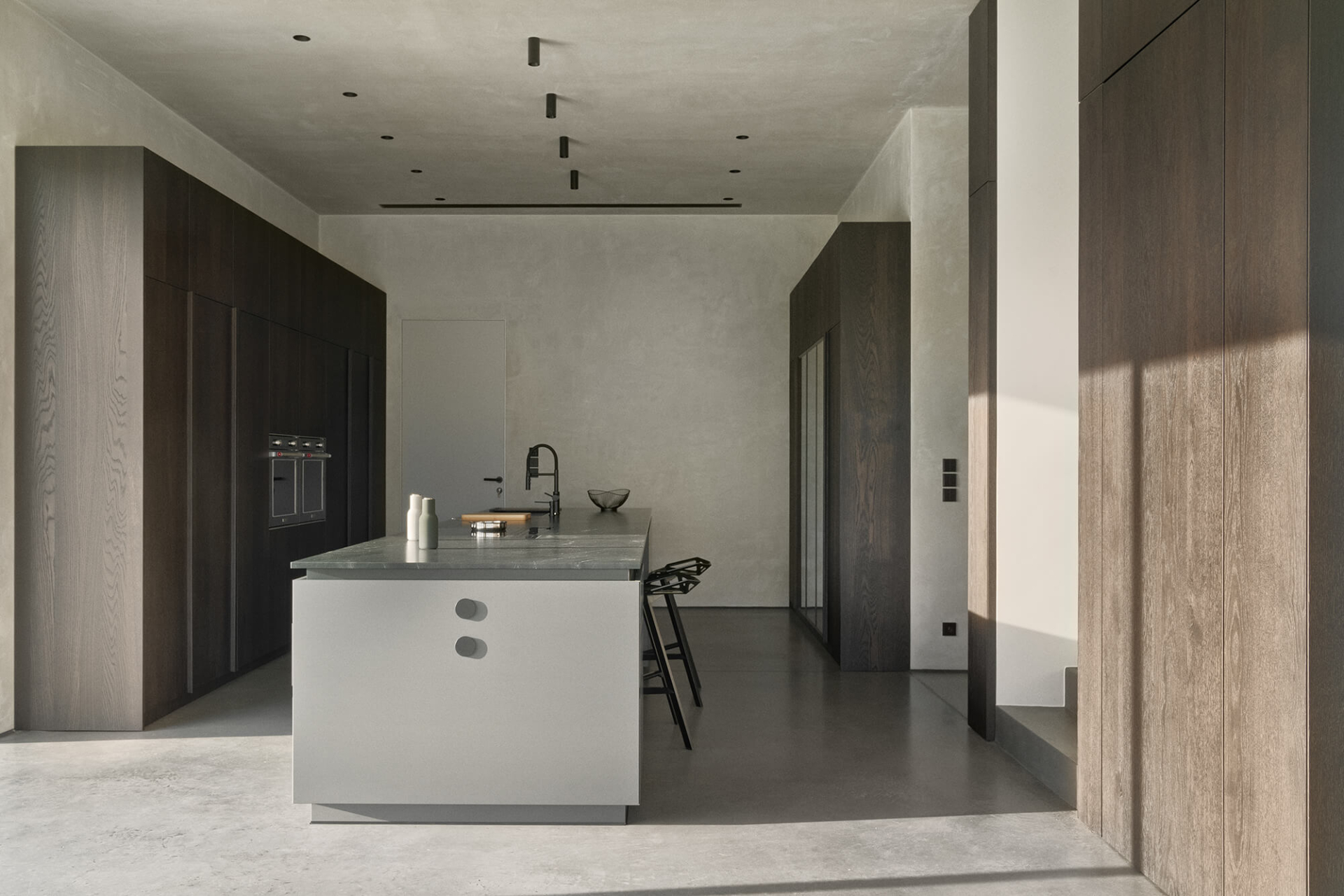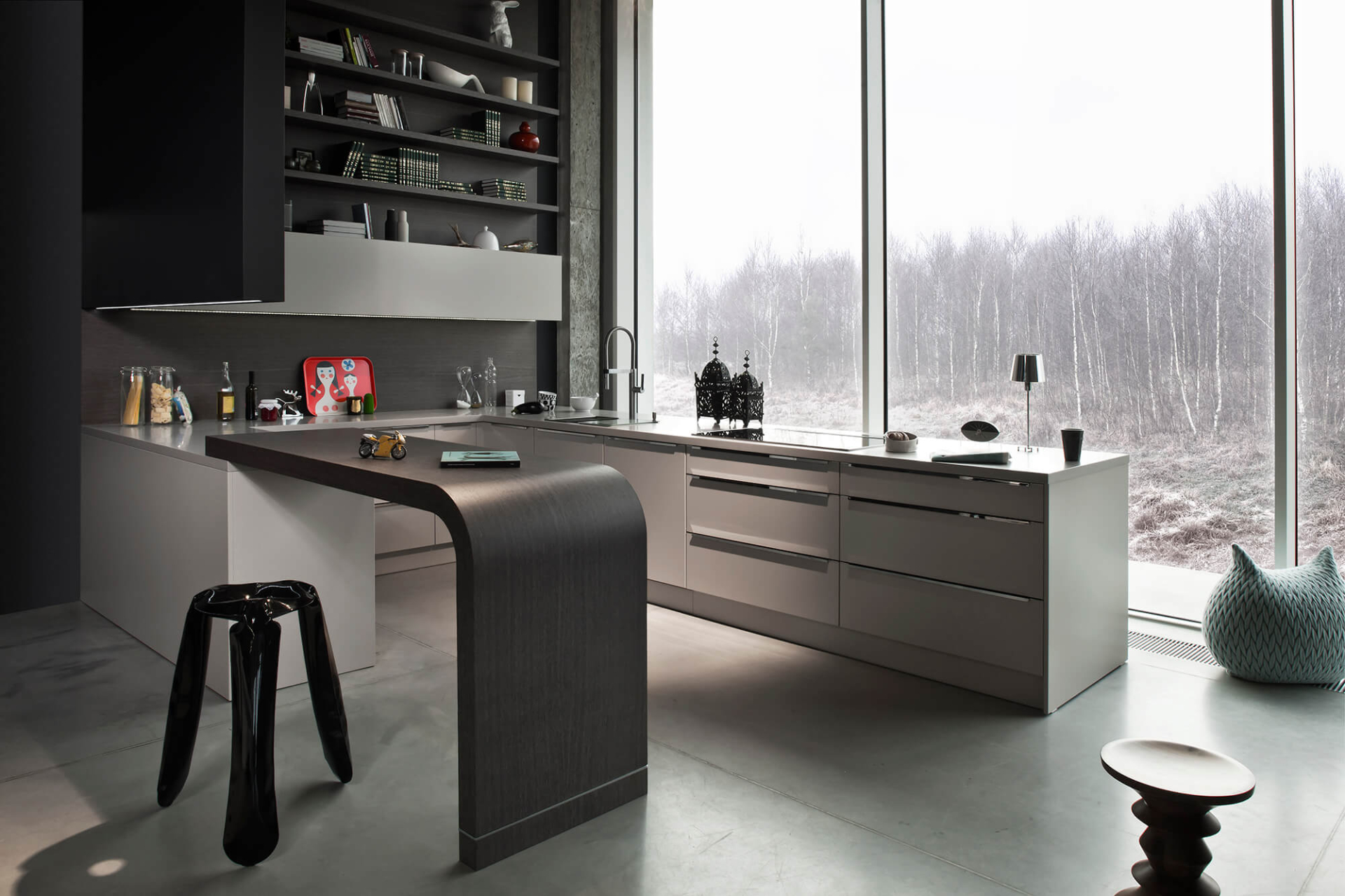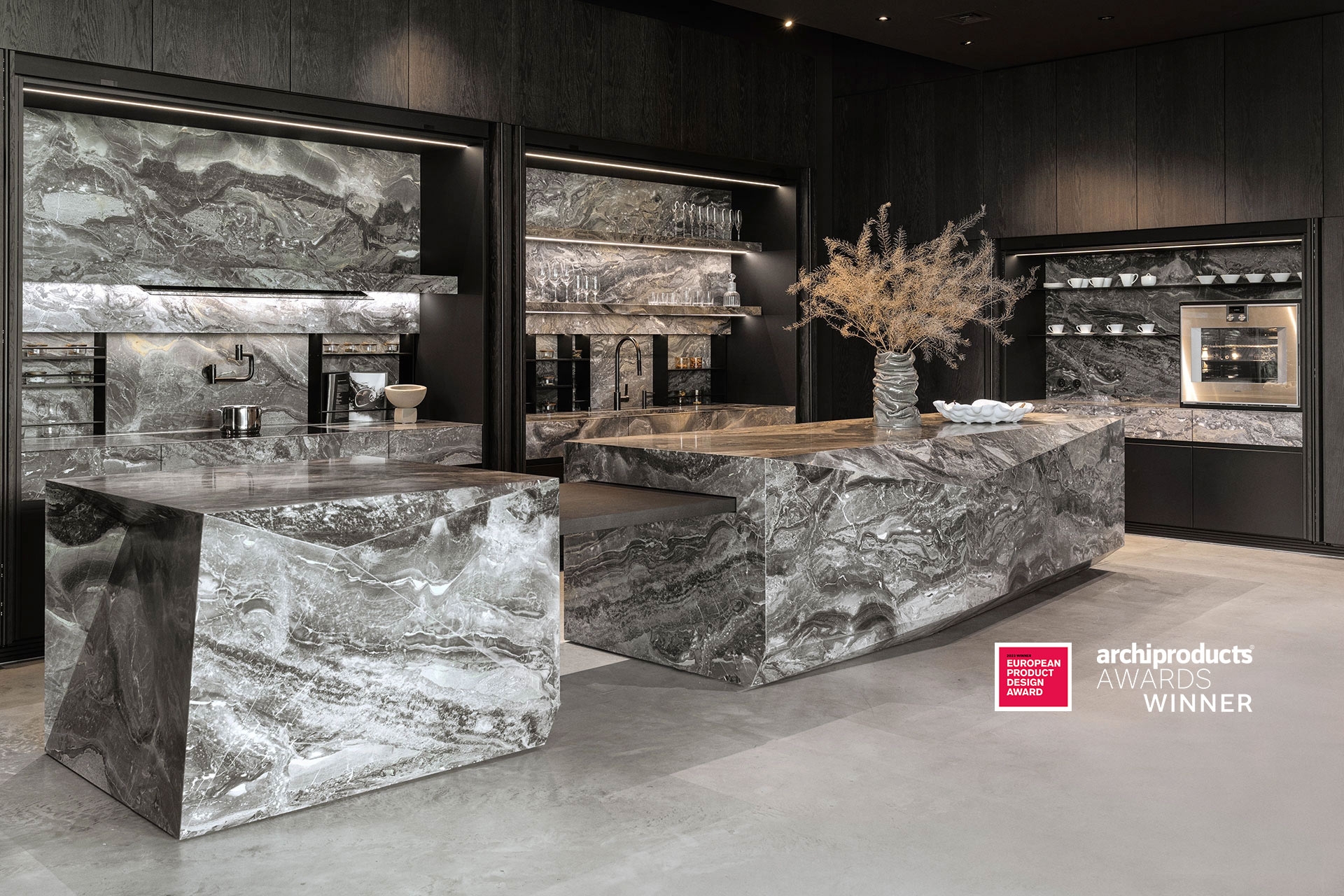The characteristic element of the Phantom kitchen is the table integrated with the island. This connection is solved in an innovative way. The construction of the island is based on a counterweight. Thanks to it, the table has no legs, and yet it remains stable and comfortable, even for four people. The edge of the island tabletop, which protrudes from the block in a tapered, irregular shape, gives the entire construction a visual lightness. Another distinguishing feature of the Phantom model is the multifunctional element that runs through the entire length of the island, in which herb pots with water drains and practical compartments are hidden. It is made of the same material as the tabletop and sides of the island.
The slightly open edges of the furniture, in which LED lighting is placed, are an original aesthetic concept. This solution looks particularly striking at night when the delicate light lines delineate the outline of the kitchen. This idea arose by chance. During the design process, one arrives at the stage of the so-called "explosion of the furniture," or the dissection of each component element. Looking at the project, I realized that these disconnected elements could look interesting in the finished kitchen. I then added the lighting to the created edges - says Patryk Zajc, the author of the kitchen project.
The Phantom kitchen is ergonomic. The tall units have pocket doors that provide convenient access to the contents of the cabinets. One of them has an internal compartment with an additional countertop, electrical sockets, special shelves, e.g., for an open cookbook, and a wooden glass hanger. The model is ordered to measure, completely personalized in terms of the choice of finishing materials.
